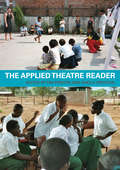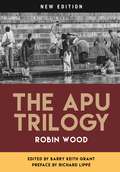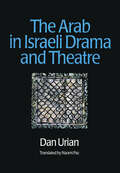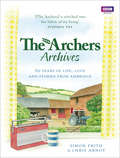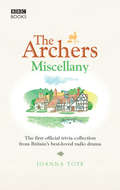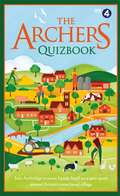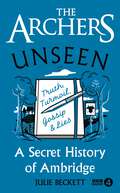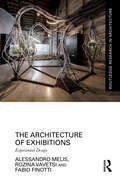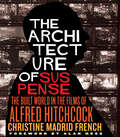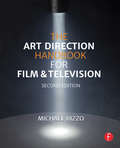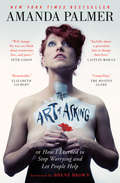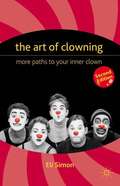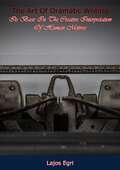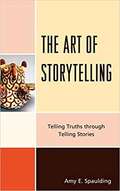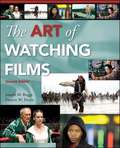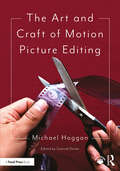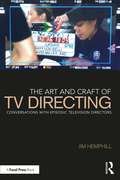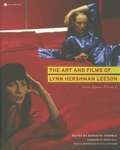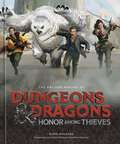- Table View
- List View
The Applied Theatre Reader
by Tim Prentki Sheila PrestonThe Applied Theatre Reader is the first book to bring together new case studies of practice by leading practitioners and academics in the field and beyond, with classic source texts from writers such as Noam Chomsky, bell hooks, Mikhail Bakhtin, Augusto Boal, and Chantal Mouffe. This book divides the field into key themes, inviting critical interrogation of issues in applied theatre whilst also acknowledging the multi-disciplinary nature of its subject. It crosses fields such as: theatre in educational settings prison theatre community performance theatre in conflict resolution and reconciliation interventionist theatre theatre for development. This collection of critical thought and practice is essential to those studying or participating in the performing arts as a means for positive change.
The Apu Trilogy: New Edition (Contemporary Approaches to Film and Media Series)
by Robin WoodThe Apu Trilogy is the fifth book written by influential film critic Robin Wood and republished for a contemporary audience. Focusing on the famed trilogy from Indian director Satyajit Ray, Wood persuasively demonstrates his ability at detailed textual analysis, providing an impressively sustained reading that elucidates the complex view of life in the trilogy. Wood was one of our most insightful and committed film critics, championing films that explore the human condition. His analysis of The Apu Trilogy reveals and illuminates the films' profoundly humanistic qualities with clarity and rigor, plumbing the psychological and emotional resonances that arise from Ray's delicate balance of performance, camerawork, and visual design. Wood was the first English-language critic to write substantively about Ray's films, which made the original publication of his monograph on The Apu Trilogy unprecedented as well as impressive. Of late there has been a renewed interest in North America in the work of Satyajit Ray, yet no other critic has come close to equaling the scope and depth of his analysis. In his introduction, originally published in 1971, Wood says reactions to Ray's work were met with indifference. In response, he offers possible reasons why this occurred, including social and cultural differences and the films' slow pacing, which contemporary critics tended to associate with classical cinema. Wood notes Ray's admiration for Western film culture, including the Hollywood cinema and European directors, particularly Jean Renoir and his realist films. Assigning a chapter to each Pather Panchali (1955), Aparajito, (1957), and The World of Apu, (1959), Wood goes on to explore each film more thoroughly. One of the aspects of this book that is particularly rewarding is Wood's analytical approach to the trilogy as a whole, as well as detailed attention given to each of the three films. The book, with a new preface by Richard Lippe and foreword by Barry Keith Grant, functions as a master class on what constitutes an in-depth reading of a work and the use of critical tools that are relevant to such a task. Robin Wood's The Apu Trilogy offers an excellent account of evaluative criticism that will appeal to film scholars and students alike.
The Arab in Israeli Drama and Theatre (Contemporary Theatre Studies #Vol. 26)
by Dan UrianWhat is Israeli theatre? Is it only a Hebrew theatre staged in Israel? Are performances by Arab Israelis working in an Arabic theatre framework not part of the repertoire of Israeli theatre? Do they perhaps belong to the Palestinian theatre? What are the "borders" of Palestinian theatre? Are not theatrical works created in East Jerusalem by Arab Israeli playwrights and actors, and staged on occasion before Jewish Israeli audiences, part of a dialogue between Palestinian and Israeli cultures? Does "theatre" only include works staged under that title? These and other similarly absorbing questions arise in Dan Urian's wide-ranging and detailed study of the image of the Arab in Israeli drama and theatre. By the use of extensive examples to show how theatre, politics and personal perceptions intertwine, the author presents us with a model which can be used as a basis for the further discussion and study of similar social and artistic phenomena in other cultures in relation to their theatre and drama.
The Archers Archives
by Simon Frith Chris ArnotThe Archers Archives celebrates 60 years of the nation's favourite radio drama - looking back at the most dramatic events to happen over 16,000 episodes, complete with cast and crew interviews. Relive the defining moments in Archers history, from the devastating 1955 stables fire and the 1957 Tom Forrest manslaughter charge to the shocking imprisonment of Susan Carter in the early 1990s, the revelation of Brian Aldridge's affair with Siobhan Hathaway, and the Grundys' eviction from Grange Farm and exile to Meadow Rise.Script-writer Simon Frith and journalist Chris Arnot take you inside the creative life of the show, sharing how the series' storylines are planned and produced, and how the historical and cultural background of each period is interwoven into the everyday lives of the residents of Ambridge. Complete with original photos, some never-before-seen, The Archers Archives is an indispensable addition to every Archers fan's collection.
The Archers Miscellany
by Joanna ToyeThe first official trivia collection from Britain's best-loved radio drama.Have you ever wondered about the attractions at Ambridge fetes? Puzzled over who the winners were at the Flower and Produce Show? Been curious about details of past Bonfire Nights, or even menus at The Bull? Discover the whos, whats, wheres and whys of the show's past 60 years in The Archers Miscellany.Discover which resident has the most names and meet the animals of Ambridge; learn the order of illumination for the Christmas lights switch-on; ponder Great Ambridge Mysteries and remember Ambridge Wanderers football team fixtures from the glory days of the 1970s.Containing information gathered from the vast BBC Birmingham Archers archives and beautifully illustrated throughout, The Archers Miscellany is the ultimate trivia book for all things Ambridge.
The Archers Quizbook: Join Ambridge treasure Lynda Snell on a quiz quest around Britain's most loved village
by The Puzzle HouseWhich traditionally comes first in the Ambridge year, the Village Fete or the Flower and Produce Show?Which tool appears on the Pargetter coat of arms?Which member of the Archers clan has a first name where all the letters read in alphabetical order?Ambridge is a place many of us know almost as well as our own home towns. But while millions of people are invested in the goings-on in this picturesque village, few have had the privilege of walking its winding lanes. Now you can. Join Lynda Snell, a true pillar of this rural community, as she takes you on a guided tour of radio's most well-loved village.Starting at the summit of Lakey Hill, with its sweeping views of rural Borsetshire, Lynda will lead you around the village's landmarks and institutions imparting wisdom and gossip as she goes. Sun yourself in the beer garden of the Bull, watch the world go by from a bench on the village green and don your wellies for a wander around Brookfield. There are weddings to attend at St Stephen's, productions to enjoy at the Village Hall and deals to be done at the Dower House.Each chapter centres on key locations to challenge your knowledge in all manner of Ambridge affairs. Whether you're a lifelong listener of The Archers, have an ear for gossip, or are a relative newbie, you will be able to put your area of expertise to the test. With 70 years of rich rural history to explore, you might even learn something new.
The Archers Quizbook: Join Ambridge treasure Lynda Snell on a quiz quest around Britain's most loved village
by The Puzzle HouseWhich traditionally comes first in the Ambridge year, the Village Fete or the Flower and Produce Show?Which tool appears on the Pargetter coat of arms?Which member of the Archers clan has a first name where all the letters read in alphabetical order?Ambridge is a place many of us know almost as well as our own home towns. But while millions of people are invested in the goings-on in this picturesque village, few have had the privilege of walking its winding lanes. Now you can. Join Lynda Snell, a true pillar of this rural community, as she takes you on a guided tour of radio's most well-loved village.Starting at the summit of Lakey Hill, with its sweeping views of rural Borsetshire, Lynda will lead you around the village's landmarks and institutions imparting wisdom and gossip as she goes. Sun yourself in the beer garden of the Bull, watch the world go by from a bench on the village green and don your wellies for a wander around Brookfield. There are weddings to attend at St Stephen's, productions to enjoy at the Village Hall and deals to be done at the Dower House.Each chapter centres on key locations to challenge your knowledge in all manner of Ambridge affairs. Whether you're a lifelong listener of The Archers, have an ear for gossip, or are a relative newbie, you will be able to put your area of expertise to the test. With 70 years of rich rural history to explore, you might even learn something new.
The Archers Unseen: A secret history of Ambridge
by Julie BeckettBlossom Hill Cottage – a secluded place with a dark past. It’s where Peggy discovered her husband Jack was an alcoholic, and it’s also where Helen stabbed her husband Rob, desperate in the face of his manipulation and control.And on to stately pile Lower Loxley – the Pargetters are proud of their centuries-old heritage, but how did Elizabeth arrive there, after her own turbulent early years, at odds with her family?This knowing excavation of Ambridge delights in the follies and everyday mischief of the inhabitants of England’s most famous village. Location by location, via the Bull and the occasional barn, the narrator takes us behind closed doors and picks up on all sorts of whispers around money, births, deaths and marriages, and romance and sex (often in inappropriate places …)In this canny, in-world exploration of Britain’s best-loved soap, we see how every relationship, each personal triumph and disaster, and all the hopes and dreams of a community over the years are folded into the personal stories of the characters we know so well today.
The Archers: An Unofficial Companion
by Rosie DillonIt’s been sixty years since the familiar dum-di-dum-di-dum-di-dum of ‘Barwick Green’ first brought The Archers to our airwaves, and in that time millions of listeners have followed the lives of folk in Ambridge. This new compendium brings together facts and trivia about characters, controversies and country customs in one handy volume.
The Archers: An Unofficial Companion
by Rosie DillonIt’s been sixty years since the familiar dum-di-dum-di-dum-di-dum of ‘Barwick Green’ first brought The Archers to our airwaves, and in that time millions of listeners have followed the lives of folk in Ambridge. This new compendium brings together facts and trivia about characters, controversies and country customs in one handy volume.
The Archers: Moments that made the nation's favourite radio drama
by Karen Farrington Joanna ToyeThe Archers, like life, is made of moments: marriages and births, loves and losses, triumphs and disasters. It has been the soundtrack of our lives for over six decades, from stooking corn with Dan Archer in the 1950s to the tragic death of Nigel Pargetter in 2011.We know the characters of Ambridge – from much-loved Phil and Jill Archer and the irrepressible Grundys to wayward Brian Aldridge – like we know close friends. This book is their tribute.The Ambridge Chronicles relives some of the defining moments in The Archers history, delving into the rich archive of its scripts, to celebrate the highs and lows that have made the world’s longest running radio serial so treasured.
The Architecture of Exhibitions: Experiential Design (Routledge Research in Architecture)
by Alessandro Melis Rozina Vavetsi Fabio FinottiThe Architecture of Exhibitions embarks on a comprehensive exploration of creativity and design innovation within exhibition spaces. It describes the fundamental principles of exhibition design, tracing the origins of creativity and considering its evolutionary significance.The book challenges conventional boundaries imposed by rigid classifications, drawing on heuristic studies in biology and the transformative concept of exaptation. It questions the traditional separations between art, science and technology, which often hinder innovation. By advocating for an interdisciplinary approach, it reimagines creativity that transcends conventional limits. Through practice-based research, multidisciplinary case studies and technological innovations, with a focus on generative AI, the book illustrates how modern exhibition spaces actively engage with their audiences, highlighting their profound impact beyond academic discourse.This book is designed for curators, designers and scholars who are passionate about the future of exhibition spaces. It offers a comprehensive understanding through its four-part structure, making it an essential read for anyone interested in the dynamic interplay between art, technology and society. The book is also designed as an instrument for the education of architecture, design and art students.
The Architecture of Suspense: The Built World in the Films of Alfred Hitchcock (Midcentury)
by Christine Madrid FrenchThe inimitable, haunting films of Alfred Hitchcock took place in settings, both exterior and interior, that deeply impacted our experiences of his most unforgettable works. From the enclosed spaces of Rope and Rear Window to the wide-open expanses of North by Northwest, the physical worlds inhabited by desperate characters are a crucial element in our perception of the Hitchcockian universe. As Christine Madrid French reveals in this original and indispensable book, Hitchcock’s relation to the built world was informed by an intense engagement with location and architectural form—in an era marked by modernism’s advance—fueled by some of the most creative midcentury designers in film.Hitchcock saw elements of the built world not just as scenic devices but as interactive areas to frame narrative exchanges. In his films, building forms also serve a sentient purpose—to capture and convey feelings, sensations, and moments that generate an emotive response from the viewer. Visualizing the contemporary built landscape allowed the director to illuminate Americans’ everyday experiences as well as their own uncertain relationship with their environment and with each other.French shares several untold stories, such as the real-life suicide outside the Hotel Empire in Vertigo (which foreshadowed uncannily that film’s tragic finale), and takes us to the actual buildings that served as the inspiration for Psycho’s infamous Bates Motel. Her analysis of North by Northwest uncovers the Frank Lloyd Wright underpinnings for Robert Boyle’s design of the modernist house from the film’s celebrated Mount Rushmore sequence and ingeniously establishes the Vandamm House as the prototype of the cinematic trope of the villain’s lair. She also shows how the widespread unemployment of the 1930s resulted in a surge of gifted architects transplanting their careers into the film industry. These practitioners created sets that drew from contemporary design schools of thought and referenced real structures, both modern and historic. The Architecture of Suspense is the first book to document how these great architectural minds found expression in Hitchcock’s films and how the director used their talents and his own unique vision to create an enduring and evocative cinematic world.Publication of this volume was assisted by a grant from Furthermore: a program of the J. M. Kaplan Fund
The Archive Effect: Found Footage and the Audiovisual Experience of History
by Jaimie BaronThe Archive Effect: Found Footage and the Audiovisual Experience of History examines the problems of representation inherent in the appropriation of archival film and video footage for historical purposes. Baron analyses the way in which the meanings of archival documents are modified when they are placed in new texts and contexts, constructing the viewer’s experience of and relationship to the past they portray. Rethinking the notion of the archival document in terms of its reception and the spectatorial experiences it generates, she explores the ‘archive effect’ as it is produced across the genres of documentary, mockumentary, experimental, and fiction films. This engaging work discusses how, for better or for worse, the archive effect is mobilized to create new histories, alternative histories, and misreadings of history.The book covers a multitude of contemporary cultural artefacts including fiction films like Zelig, Forrest Gump and JFK, mockumentaries such as The Blair Witch Project and Forgotten Silver, documentaries like Standard Operating Procedure and Grizzly Man, and videogames like Call of Duty: World at War. In addition, she examines the works of many experimental filmmakers including those of Péter Forgács, Adele Horne, Bill Morrison, Cheryl Dunye, and Natalie Bookchin.
The Art Direction Handbook for Film & Television
by Michael RizzoIn this new and expanded edition of The Art Direction Handbook, author Michael Rizzo now covers art direction for television, in addition to updated coverage of film design. This comprehensive, professional manual details the set-up of the art department and the day-to-day job duties: scouting for locations, research, executing the design concept, supervising scenery construction, and surviving production. Beyond that, there is an emphasis on not just how to do the job, but how to succeed and secure other jobs. Rounding out the text is an extensive collection of useful forms and checklists, as well as interviews with prominent art directors.
The Art Of Asking: How I Learned to Stop Worrying and Let People Help
by Amanda Palmer Bren Eacute BrownRock star, crowdfunding pioneer, and TED speaker Amanda Palmer knows all about asking. Performing as a living statue in a wedding dress, she wordlessly asked thousands of passersby for their dollars. When she became a singer, songwriter, and musician, she was not afraid to ask her audience to support her as she surfed the crowd (and slept on their couches while touring). And when she left her record label to strike out on her own, she asked her fans to support her in making an album, leading to the world's most successful music Kickstarter. Even while Amanda is both celebrated and attacked for her fearlessness in asking for help, she finds that there are important things she cannot ask for-as a musician, as a friend, and as a wife. She learns that she isn't alone in this, that so many people are afraid to ask for help, and it paralyzes their lives and relationships. In this groundbreaking book, she explores these barriers in her own life and in the lives of those around her, and discovers the emotional, philosophical, and practical aspects of THE ART OF ASKING. Part manifesto, part revelation, this is the story of an artist struggling with the new rules of exchange in the twenty-first century, both on and off the Internet. THE ART OF ASKING will inspire readers to rethink their own ideas about asking, giving, art, and love.
The Art Of Clowning
by Eli SimonAcclaimed by readers and reviewers alike, the first volume of The Presidio and Militia on the Northern Frontier of New Spain was a landmark in the documentary study of seventeenth-century Spanish Colonial Mexico. Here, Charles W. Polzer and Thomas E. Sheridan bring the same incisive scholarship and careful editing to long-awaited Volume Two, covering the years 1700-1765. The two-part second volume looks at the Spanish expansion as occurring in four north-south corridors that carried the main components of social and political activity. Divided geographically, materials in this book (part 1) relate to the two westernmost corridors, while those in the projected book (part 2) will cover the corridors north to New Mexico and northeast into Texas. Documents in both books demonstrate the importance of regional hostilities rather than exterior threats in the establishment of presidios. Materials in this book relate to events and episodes in the Californias (the peninsula of Baja California) where the situation of the presidial forces was unique in New Spain. By bringing into focus the ways that civil-religious relations affected the military garrison there, these documents contribute immeasurably to a greater understanding of how California itself emerged in history. Also covering Sinaloa and Sonora, the mainland of the west coast of New Spain, records in the book reveal how the Sinaloa coastal forces differed from those in the interior and how they were depended upon for protection in the northern expansion, both civil and missionary. Because documents on the presidios in northern New Spain are vast in number and varied in content, these selections are meant to provide for the reader or researcher a framework around which more elaborate studies might be constructed. All of the records have been translated from the Spanish language into readable, modern English and are accompanied by transcribed versions of the originals. Valuable to both non-specialists and specialists, here is an unparalleled resource important not only for the careful selection, preparation, and presentation of documents, but also for the excellent background information that puts them into context and makes them come alive.
The Art Of Dramatic Writing: Its Basis In The Creative Interpretation Of Human Motives
by Lajos EgriAmong the many "how-to" playwriting books that have appeared over the years, there have been few that attempt to analyze the mysteries of play construction. Lajos Egri's classic does just that, with instruction that can be applied equally well to a short story, novel, or screenplay. Examining a play from the inside out, Egri starts with the heart of any drama: its characters. All good dramatic writing hinges on people and their relationships, which serve to move the story forward and give it life, as well as an understanding of human motives--why people act the way that they do. Using examples from everything from William Shakespeare's Romeo and Juliet to Henrik Ibsen's A Doll 's House, Egri shows how it is essential for the author to have a basic premise--a thesis, demonstrated in terms of human behavior--and to develop the dramatic conflict on the basis of that behavior. Using Egri's ABCs of premise, character, and conflict, The Art of Dramatic Writing is a direct, jargon-free approach to the problem of achieving truth in writing. Print ed.“THIS book was written not only for authors and playwrights, but for the general public. If the reading public understands the mechanism of writing, if that public becomes aware of the hardships, the tremendous effort that goes into any and all literary work, appreciation will become more spontaneous.The reader will find at the end of this book synopses of plays, analyzed according to dialectics. We hope these will add to the reader’s understanding of novels and short stories in general, and of plays and movies in particular.We have based our theory on the eternally changing “character” who forever reacts, almost violently, to constantly changing internal and external stimuli.”-Foreword.
The Art Of Money Getting: Large Print
by P. T. BarnumP. T. Barnum’s "The Art of Money Getting" is a timeless guide to achieving financial success, filled with practical advice and insights from one of America’s most famous showmen and businessmen. First published in 1880, Barnum’s wisdom on wealth accumulation remains relevant today, offering readers a blend of common sense, business acumen, and moral guidance.In this classic work, Barnum shares his principles for acquiring wealth, emphasizing the importance of hard work, integrity, and smart decision-making. His straightforward and engaging writing style makes complex financial concepts accessible to readers from all walks of life, ensuring that anyone can benefit from his advice.Key themes in "The Art of Money Getting" include:1. Industry and Perseverance: Barnum highlights the value of dedication and hard work as fundamental to financial success. He encourages readers to be industrious and persistent in their pursuits, never giving up in the face of adversity.2. Integrity and Honesty: Ethical behavior and honesty are cornerstones of Barnum’s philosophy. He believes that trustworthiness and a good reputation are essential assets in business and life.3. Thrift and Economy: Barnum advises readers to manage their finances wisely, avoid unnecessary expenses, and practice frugality. He emphasizes the importance of saving and investing prudently.4. Self-Reliance and Confidence: Believing in oneself and one’s abilities is crucial for success. Barnum encourages readers to be self-reliant, confident, and proactive in seizing opportunities.5. Learning and Adaptability: Continuous learning and the ability to adapt to changing circumstances are vital. Barnum stresses the need to stay informed and be open to new ideas and innovations.6. Customer Service and Satisfaction: Providing excellent service and ensuring customer satisfaction are key to building a successful business. Barnum underscores the importance of understanding and meeting the needs of clients.
The Art Of Storytelling: Telling Truths Through Telling Stories
by Amy E. SpauldingStorytelling is an art, as well as a skill. It allows the listener to take an idea and shape it into something that is relatable on a personal level. In The Art of Storytelling: Telling Truths Through Telling Stories, Amy E. Spaulding enables the reader to learn how to develop this skill, while also discovering the tradition of storytelling. Spaulding covers a wide array of important storytelling elements, from advice on choosing, learning, and presenting the stories to discussions on the importance of storytelling through human history and its continued significance today. This book includes an annotated list of stories, as well as a bibliography of collections and a brief list of recommendations for online sources. Designed for anyone who wants to develop the skill of telling stories, The Art of Storytelling is a resource for drama students, teachers, librarians, and for those learning on their own without a formal class setting.
The Art Of Watching Films (Seventh Edition)
by Dennis W. PetrieNot only is there an art to making films, there is also an art to watching films. We wrote this book to challenge students in introduction to film courses to sharpen their powers of observation, develop the skills and habits of perceptive watching, and discover complex aspects of film art that they might otherwise overlook. We designed the text to complement any film studied; its analytical framework can be applied to films as distincly different as The Grapes of Wrath, Caché, Dreamgirls, Batman Begins, Little Miss Sunshine, and Flags of our Fathers.
The Art and Craft of Motion Picture Editing
by Michael HogganThis book explains the broader context of what the art and craft of motion picture editing entails, framing the creative acts of editing within an overall view of the production process and requirements for effective storytelling. This book offers real experiences and advice from seasoned editors on the editing process, providing a detailed examination of filmmaking from the editor’s point of view and exploring how best to cultivate creative relationships with other areas of production to form the final personality of the film. Emphasizing both practicality and creativity, industry veteran Michael Hoggan successfully bridges the gap between the mechanical skills of editing and the thought process behind these decisions. While most books focus primarily on the mind of the creator, this book explores the evolution of practices in film production and editing with respect to the ever-changing expectations of the audience. As the book demonstrates, understanding editing from the audience’s perspective is essential to any successful film. This book will be of interest to post-production students, independent filmmakers, film critics, and agents with editing clients. It is accompanied by a collection of rich digital materials, including a glossary, bibliography, and more.
The Art and Craft of TV Directing: Conversations with Episodic Television Directors
by Jim HemphillThe Art and Craft of TV Directing offers a broad and in-depth view of the craft of TV Directing in the form of detailed interviews with dozens of the industry’s most accomplished episodic television directors.Author Jim Hemphill provides students with essential information on the complexities of working in episodic TV, highlighting the artistic, technical, and interpersonal skills required, and exploring a variety of entry points and approaches to provide a comprehensive overview of how to begin and sustain a career as a television director. The book discusses how to merge one’s personal style with the established visual language of any given show, while also adhering to tight budgets and schedules and navigating the complicated politics of working with showrunners, networks, and producers. The book also features interviews with a range of directors, from feature directors who have moved into episodic TV (Kimberly Peirce, Mark Pellington) to directors who have made the transition from other disciplines like acting (Andrew McCarthy, Lea Thompson), hair and makeup (Stacey K. Black) and stunts (David M. Barrett).This book provides unprecedented access to the experiences and advice of contemporary working episodic television directors, and is an ideal resource for students studying television directing, early career professionals looking for advice, and working directors looking to make the transition from feature directing to episodic TV directing.
The Art and Films of Lynn Hershman Leeson: Secret Agents, Private I
by Kyle Stephan Robin Held Meredith TrombleLynn Hershman Leeson's groundbreaking installation, performance, photography, video, digital, and film works have earned her an international reputation as a prodigious and innovative artist. This first historical and critical analysis of her work by prominent scholars and the artist herself brings nearly forty years of creative output into focus by tracking the development of her constant themes through each medium. The provocative essay in this volume, ranging from formal to theoretical to psychological to poetical analyses, establish her place at the forefront of contemporary art. Hershman Leeson's work explores vision, spectatorship, and the construction of sexed subjectivity, touching on key feminist concerns relating to the lived experience of the physical body and the body as a medium on which social law and values are inscribed. Her projects of self-analysis and self-mythification explode stable notions of identity.
The Art and Making of Dungeons & Dragons: Honor Among Thieves
by Eleni RoussosThe official behind-the-scenes companion to Dungeons & Dragons: Honor Among Thieves, featuring cast and crew interviews, photos, and insights about making the filmFor fans of Dungeons & Dragons and the upcoming fantasy adventure film Dungeons & Dragons: Honor Among Thieves, this gorgeous tome showcases the storytelling, worldbuilding, and creativity behind the movie.Join in the adventures across Faerûn with stars Chris Pine, Michelle Rodriguez, Hugh Grant, Justice Smith, Regé-Jean Page, Sophia Lillis, and the rest of the dedicated cast and crew on their journey to bring the world of Dungeons & Dragons to life. With sections that highlight fan-favorite characters, monsters, and settings, plus explorations of key scenes from the film, this book is packed with production photos, concept art, storyboards, interviews, and more.Experience the film like never before in this visual feast that takes you behind the scenes of bringing Dungeons & Dragons to the big screen.
